Iceland is the world’s largest volcanically-formed island. Like other volcanic islands, it’s located on a “hot spot” on the earth’s surface. These hot spots occur where magma from the earth’s mantle layer (the one between the crust and the core) breaks through the crust. In the cases of islands like Hawaii, the hot spot is in the middle of a tectonic plate (the big pieces of the earth’s crust that the different land masses are attached to), and as the plates shift, the hot spot leaves a trail of islands behind it. In the case of Iceland, the hot spot coincides with a ridge between two tectonic plates, the North American and the Eurasian. There are a few places on the island where you can actually go and stand between the two continental plates! They continue to drift farther and farther apart, moving at a rate of about 2cm per year (a little less than an inch). That maybe doesn’t sound like much, but we’re talking about massive portions of the earth’s crust. That’s insane!!
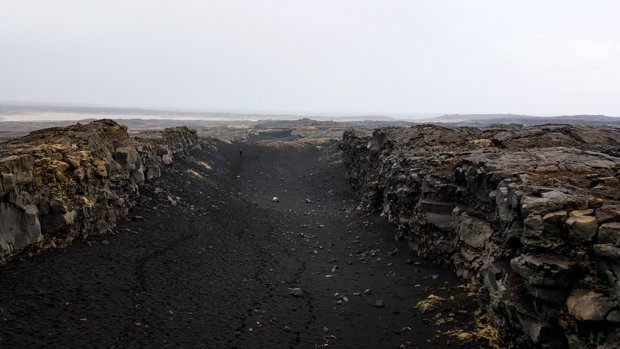

According to estimates, the island started to form around 20 million years ago when magma broke through the earth’s crust, came up through the seafloor, and quickly cooled and hardened. This area grew and grew over time, and due to its location on the ridge line, there are a lot of earthquakes, geysers, and volcanoes. The volcanoes grew the island even more, adding new land with each eruption. On average, there’s a volcanic eruption in Iceland every three years! One-third of the lava that has reached earth’s surface in recorded history has come from eruptions in Iceland.
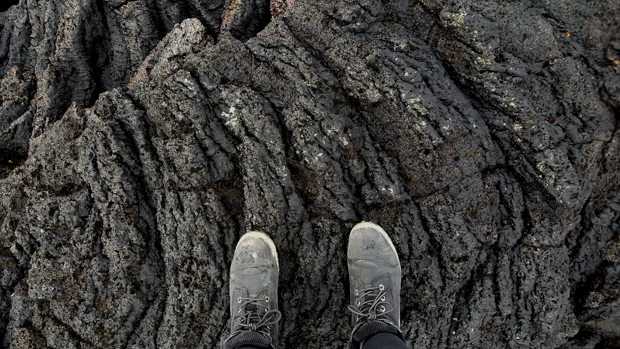
Iceland is considered very young in the scheme of the world’s land masses, but get this: between 1963 and 1967, a new volcanic island was formed about 32km (20mi) off the coast of Iceland! It’s called Surtsey, and it was quickly claimed by the Icelandic government. In 1967, it was about 2.7km2 (1mi2) in area, and now, less than 50 years later, it has eroded to half that size. It’s really cool because it’s completely uninhabited by humans, and scientists are using it to understand more about how plants begin to grow on new land and how animals move in and affect its development. There are currently more than 65 plant species and 16 bird species found on the island! In some places, the land is still incredibly hot. Temperatures can be as high as 100 degrees C (over 200 degrees F) just slightly below the surface!
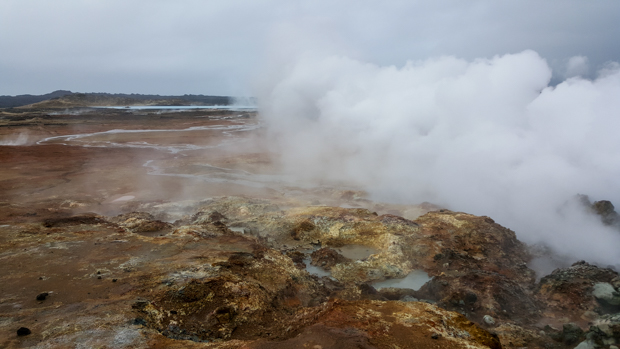
The first serious settlers came to Iceland around 870AD. Before that, Nordic Viking explorers came and went, learning more about the island and seeing if it would be feasible to settle there. It started with just a couple families, and at the end of the 9th century, there was an influx of settlers from the British Isles and the Nordic countries, especially Norway due to the oppressive and barbaric king at the time.

People were free to claim land as they came, and within about 60 years, the habitable land on the island was fully settled. During this time of settlement, the people were mostly led by various chieftains, but by 1930, they recognized that there needed to be greater coordination to establish order. As a result, the “Althing”, the world’s oldest nationwide parliament, was formed. It met each summer at Thingvellir to make laws, settle disputes, and organize trade.
The settlers arrived as pagans, mostly worshipping the Norse gods (you’re probably familiar with at least one of them, Thor). When a new king came to power in Norway in 995AD, he decided to make a project of converting the people of Iceland. He sent missionaries who were semi-successful, and this led to conflict both on the island and between Iceland and Norway. To avoid civil war, the pagan Law Speaker (responsible for reciting the laws at Althing sessions) at the time was given the authority to decide the official religion. He concluded that Iceland should become Christian, mostly to avoid further conflict, but people should be allowed to continue their pagan worship practices in private.
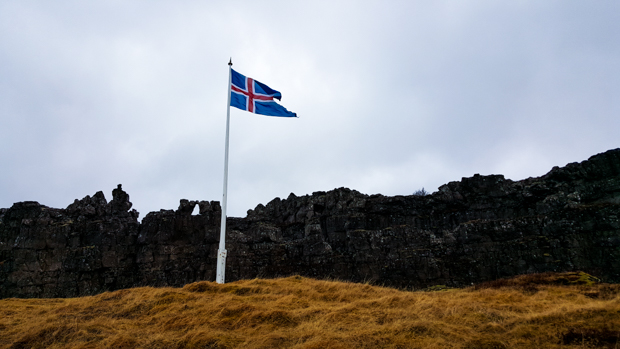
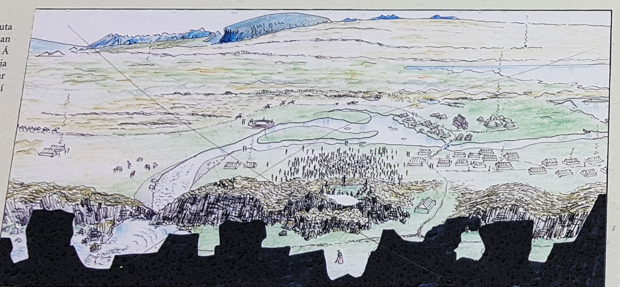


And so, all was generally calm for a while. Writing was introduced in the early 12th century, and this led to the Age of Writing. A written lawbook came first in 1117 and was followed by various history books and sagas. Then, in 1220, the peace was broken when power struggles arose between one of the most powerful clans on the island, the Sturlung clan, and others. During this “Age of Sturlungs”, the clans fought each other in a bloody civil war. Even after the Sturlungs were defeated, fighting continued sporadically for years and years. Finally, in 1262, the Althing signed the “Old Covenant” with Norway, agreeing to become a province of the Kingdom of Norway and ending the clan conflicts.
Iceland was part of the Norwegian kingdom until 1380 when Norway, Sweden, and Denmark were unified. Denmark was the dominant power, and unlike Norway, it didn’t have a need for Icelandic goods, and it didn’t care much about Iceland. Without this trade, the Icelanders struggled, and the next few centuries under Danish rule were difficult. The Black Death and other widespread diseases wiped out large portions of the population. A climate shift made it difficult to grow crops. Hundreds of people were kidnapped into slavery by pirates from North Africa. A volcanic eruption killed thousands, eliminated most of the livestock, and caused the eventual starvation of thousands more. A trade monopoly implemented by Denmark made it impossible for the economy to grow.
Finally, in 1843, Iceland started to make moves towards independence again. The Althing, which had been virtually powerless for centuries and shut down in 1800 by the Danish king, was reestablished. In 1874, Denmark granted the Althing limited power and allowed the creation of a new constitution! One thousand years after Iceland’s settlement, the people were finally back on track to become independent. In 1904, Denmark recognized Iceland as a sovereign state, and Iceland continued to use Denmark for defense until World War II when Denmark was occupied by Nazi Germany.
Iceland was declared neutral and was determined to stay out of the war. After the occupation of neutral Denmark by the Nazis, the UK worried that Iceland was next. Despite Iceland’s insistence that they be left alone, British troops were sent to occupy the island. Iceland protested the invasion for violating its neutrality but cooperated under the assurance that the troops would leave after the war.
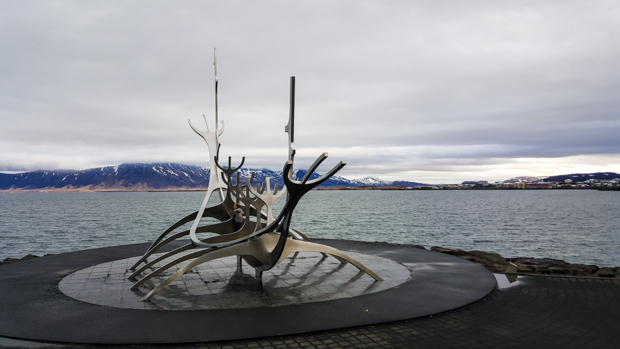
Interestingly enough, the war helped to turn Iceland’s economy around. The occupiers flooded the economy with foreign money and hired locals to work on their projects, dramatically lowering the unemployment rate. Meanwhile, the people voted to become a fully independent republic in 1944. After the war, Iceland received aid that the new government used to improve the country’s industrial infrastructure, ensuring that the prosperity and high employment levels enjoyed during the war would continue.
I don’t know about you, but my head is just about spinning. It’s crazy how quickly Iceland’s luck turned around! Within 100 years, it went from poor and weak to thriving and independent. Now, it has booming tourism, aluminum, and fishing industries, among others, and is in no danger of returning to its pre-WWII economic struggle.
Usually, historical context is helpful for understanding the sights in a place. Since Iceland’s most well-known features are primarily natural, that doesn’t necessarily apply as much in this situation. Even so, I think it’s interesting to see how different countries have gotten to where they are today and how they’ve interacted with the countries around them in the past. Recently, I’ve changed the way I think about history, seeing it as a big, complicated story instead of just a school subject where you’re forced to memorize lots of dates and names. It’s changed everything for me because who doesn’t like stories?? (I know, it’s right there in the name. Silly Lara.) Now, when I go to a new place, I can’t wait to learn another part of the story of the world.

Linda Sywulak says:
Love your blogs! I recently heard that Greenland is icy and Iceland is green; I think your next trip needs to be to Greenland so you can report back and let me know if that is true!
Lark says:
Hahaha well I think that Iceland is pretty darn icy in the winter (but very green in the summer). I can’t speak to Greenland though, so yes, a trip there should definitely be arranged.